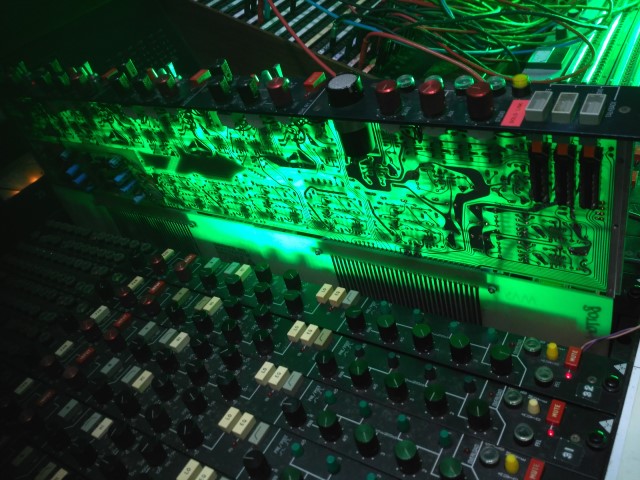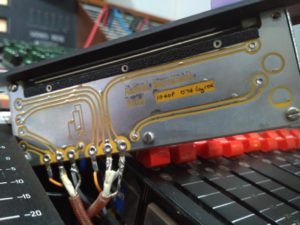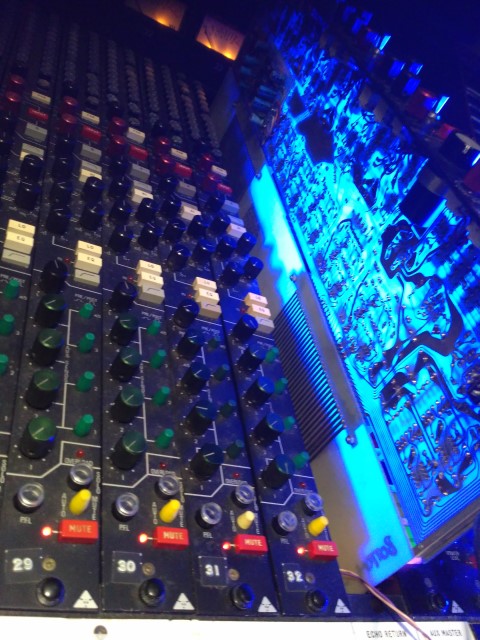
I believe today analog consoles are seen by many as bulky, unbelievably thirsty of energy and continuously in need of maintenance items, in practical terms, obsolete tools.
The tendency, in the last decade, has been to abandon the traditional mixing desk in favor of virtual mixers or “control surfaces“: Focusing on quality converters with as many as possible inputs and hardware gear, like equalizers and dynamics processors connected to a patchbay, to combine at wish.
This choice has great advantages in terms of variety of sound and physical space, considering that you buy only the modules you really need or like for your usual session, possibly with different audio “colors“, to have a wide sound palette, instead of lots of identical channels as in the classic console.
Of course I agree with this approach, but limited to the phase of recording. I find the classic surface controlling and placement of knobs, ergonomically ideal, being the result of decades of “evolution” in mixing down techniques in analog. For this reason digital control surfaces mimic the shape and workflow of the analog desks. When you start working out of the box, is way more comfortable to have easy access and visuals of the parameters you are adjusting.
Having an analog mixing desk, forces you to a sort of marriage to your equipment, your mixer is the heart of the studio, it will imprint its own sound and needs all your care and attentions and the older, the more care it will need.
It is annoying to find your preamplifer is broken, but having a failure in the mixing buss of the mixer, for example, forces you to do an immediate repair, or you will have no music at all!
Big mixers are modular for this reason, studios always had modules in stock, to swap them with already repaired ones, in case one of them was failing.

On my Trident Series 80b, its oscillator needed to detect the failures, was broken, it couldn’t generate a sine wave anymore. Instead judging from the scope, it was generating a strange saturated square waveform. I will do what is possible in the future to fix it, in substitution the old Korg MS-50 oscillator has been useful as lab tool once again. This time I used its oscillator, rounding a triangular waveform through the LPF, to obtain the sine wave I wanted for the tests.

One of the problems the console was having, was a false contact somewhere in the remix buss, making at low gain, from time to time, disappear the right side of the stereo mix. The Trident Series 80 has plenty of TL-071 opamps, spread everywhere on its circuits. Usually if there’s something wrong in the signal, those are the first components I learned must be checked.

This time, the culpable for the Remix buss fail, was a wrong peeling of the wires that connected the mix buss card with its motherboard (Echo Aux module) made sometime in the past. Because the copper core was cut too much, part of its filaments must have been lost with the shaking, during the various repairs in the last 35 years and the connection on both the positive audio rail and ground, was extremely fragile and intermittent.
While illuminating the mixer’s board with a strong spotlight, I realized for the first time that the resin the PCB is made of, is transparent. We are used to the squared, mostly made of straight lines, tracks of the circuits of today, sure ideal for the mechanization process in their production. Looking at old circuits instead, I’m always fascinated by the “organic” shapes and in a certain way artistic, tracks “style”!

In all these years mixing ITB, I’ve been continuosly dreaming to return to mix in analog and to do so, try to remain as close as possible to the classic 70s and 80s studio setup. Thanks to the energy put in the last several months, I could restore my old Trident console, fix its patchbay and slowly move from a recording only setup, to a complete production and mixing studio.

